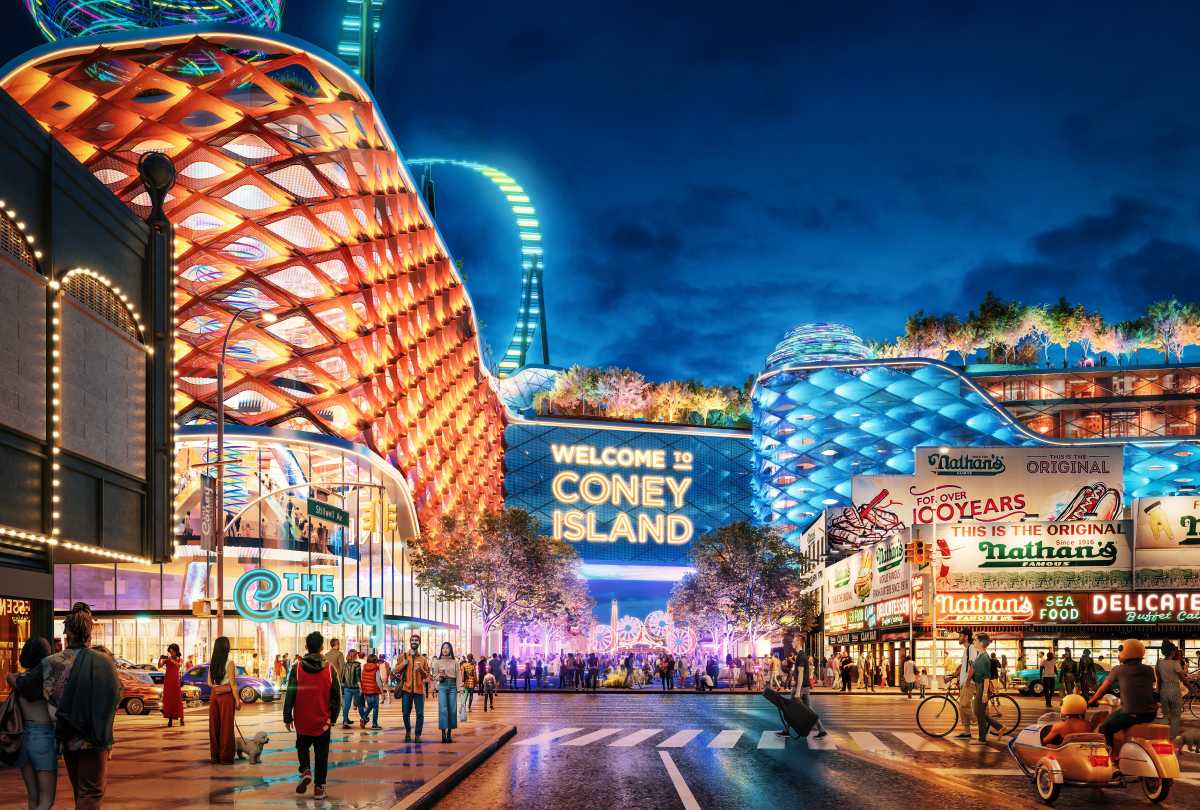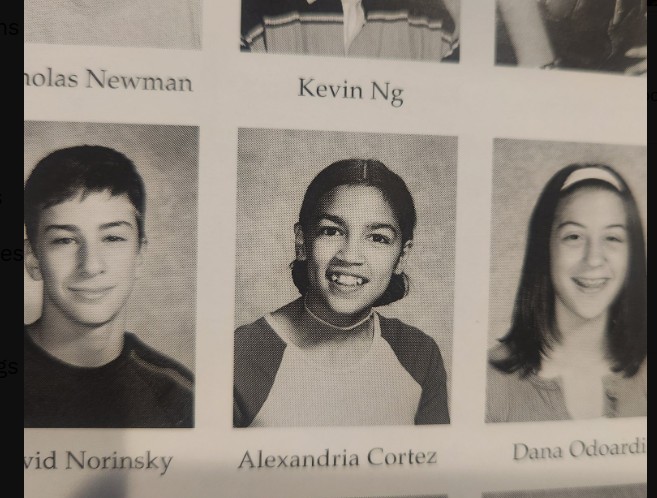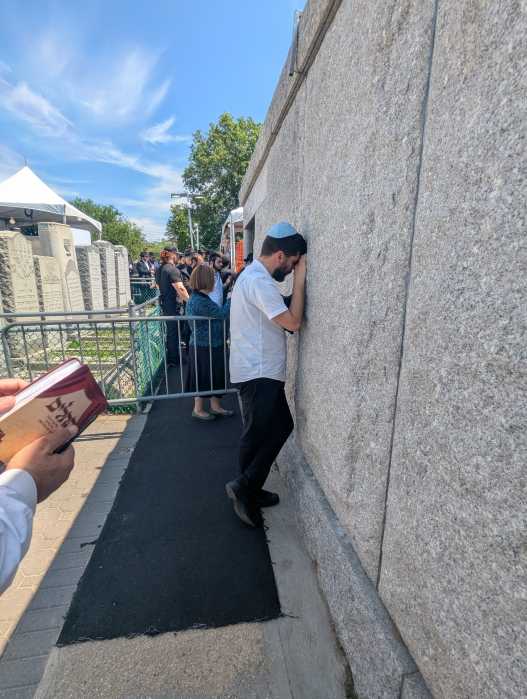By Ronda Kaysen
The controversy was to be expected. A significant Downtown art institution holds a conference and exhibit on the anniversary of Sept. 11, equipped with politically provocative artwork, homages to divisive intellectuals and a walking tour of the World Trade Center site. The city’s tabloid newspapers and vocal 9/11 family organizations get wind of the plan and lash out, aghast that such sacrilege would occur on a day of remembrance. In this most recent incarnation of the ongoing battle between art and remembrance at the World Trade Center, all sides followed their scripts to a T.
For the fourth anniversary of Sept. 11, the Lower Manhattan Cultural Council held an international conference titled “What Comes After: Cities, Art and Recovery,” spread over three days, with speakers from around the world and several art exhibits opening simultaneously throughout Lower Manhattan.
One of the show’s exhibits, “A Knock at the Door…” at Cooper Union and the South Street Seaport Museum, examined how artists have experienced and interpret censorship in the post-9/11 era, evoking the ire of a handful of vocal 9/11 families organizations and generating a media frenzy in the city’s tabloids. (The Seaport Museum exhibit remains open until Oct. 1.)
At the center of the controversy are several provocative pieces: an American flag in the shape of straight jacket titled “(un)Patriot(ic) Act”; N.F.L. player Pat Tillman, a soldier who died in Afghanistan, gracing the cover of a magazine titled “Friendly Fire”; a portrait of the president comprised of tiny monkeys dancing in a marsh. The president’s portrait, “Bush Monkeys” by Chris Savido, prompted Chelsea Market managers to shut down a 60-piece exhibit in which the piece was displayed last December.
The name behind the exhibit is derived from the experience of Steven Kurtz, a Buffalo professor and artist who called 911 when his wife had a heart attack and soon found himself the subject of an F.B.I. investigation about a supply of biological samples he kept in his home for art projects. He is now facing mail and wire fraud charges. The art installation in his honor is made from a pile of trash — pizza boxes and empty water bottles—left in the wake of the F.B.I. raid of Kurtz’s home.
The show’s curators anticipated controversy would accompany their exhibit and controversy they got. A family group, 9/11 Families for a Safe and Strong America, posted an open letter on its Web site denouncing the exhibit as offensive, a New York Post headline screamed “‘Blame U.S.’ Garbage Art Truly Stinks Up the Joint” and a Daily News editorial declared, “‘A Knock at the Door’ should be a knock upside the head for New York” and suggested choosing an alternate date for the exhibit.
The anniversary was precisely the weekend the curators had in mind when they sat down last January to plan “What Comes After,” Radhika Subramaniam, the show’s chief curator, told Downtown Express, adding that an alternate date might not have evoked such an intense response.
The Cultural Council sees itself as not merely a gatekeeper of arts Downtown, but as “part of the families,” L.M.C.C. president Tom Healy, who joined the group in 2004, told Downtown Express. Michael Richards, an L.M.C.C. resident artist, died on the 92nd floor of 1 W.T.C. and the organization lost its 5 W.T.C. offices in the disaster.
“This terrorist act did not take place in an open field. It took place in a complex, living, breathing city,” said Healy. “It’s very important to us to create a memorial in the context of this complex city.”
Art that is critical of post-9/11 politics is at the heart of this debate and has been since before the show was conceived. For a contingent of families, politics — specifically politics of dissent — has no place anywhere in the 9/11 discussions.
“Our intent is not to censor the content of the L.M.C.C. or the I.F.C.”— the International Freedom Center, a cultural center planned for the W.T.C. site — “but to merely point out that there must be no politics where heroes died and a nation united,” Anthony Gardner, a spokesperson for the Coalition of 9/11 Families whose brother Harvey died in the disaster, wrote in an e-mail to Downtown Express.
Even seemingly benign aspects of the exhibit caused alarm, including a walking tour of the W.T.C. site. Ironically, the tour was arranged by the Tribute Center, a W.T.C. visitors’ center steered by The September 11th Families Association, another families group.
“It is offensive that while many of us will be down in the Pit, on 9/11, above us you will take ‘international cultural summit’ attendees on a walking tour of the World Trade Center site,” 9/11 Families for a Safe and Strong America wrote in an open letter on their Web site. “That’s hallowed ground you’ll be standing on, on 9/11, and how you choose to conduct yourself is a decision you’ll have to make on your own.”
The L.M.C.C. ultimately rescheduled the walking tour for Sept. 10 because of security issues.
The W.T.C. site has become a battleground over how — or if — art has a place in a memorial. The Drawing Center, one of the organizations slated for the W.T.C. cultural center situated beside the memorial, came under heavy fire this summer from a contingent of 9/11 families and the Daily News for displaying art that questioned Bush administration policy. In response, Governor George Pataki demanded “an absolute guarantee” from arts organizations at the cultural center that they have “total respect for the sanctity of the site.”
After tense negotiations, the Drawing Center, a Soho group, is now looking for an alternate location and the International Freedom Center, an organization created for the site, has until Sept. 23 to present detailed plans about its content to the Lower Manhattan Development Corporation, the agency overseeing the redevelopment. On Sept. 10, a group of families rallied at the W.T.C. site against the cultural center.
The definition of “sacred ground” — as far as the vocal families are concerned — has changed with the advent of “What Comes After.” The families that until recently restricted their criticism of art content to the 16 acres between Liberty and Vesey Sts. have now extended their discussion to envelope a much wider swath of Downtown.
“This [L.M.C.C.] summit is a telling preview of the politics that will defile the World Trade Center Memorial in the years to come,” wrote Gardner, who attended the Sept. 10 rally.
L.M.C.C. joined the debate early on, maintaining that limiting art at the cultural center amounts to censorship. The Cultural Council does not intend to back down from its stance anytime soon, and if the anniversary show is any harbinger of what’s to come, the debate will likely grow fiercer in the coming months.
“There has been a chilling atmosphere about responding to Sept. 11 in a wide range of ways as if there should only be one official story,” said Healy, “and the arts don’t flourish with an official story. The arts flourish with debate.”
Ronda@DowntownExpress.com
google_ad_client = “pub-6226499064891091”;
google_ad_width = 468;
google_ad_height = 60;
google_ad_format = “468x60_as”;
google_ad_channel =”0606561524″;
google_color_border = “336699”;
google_color_bg = “FFFFFF”;
google_color_link = “0000FF”;
google_color_url = “008000”;
google_color_text = “000000”;
//–>
src=”https://pagead2.googlesyndication.com/pagead/show_ads.js”>
WWW Downtown Express



























